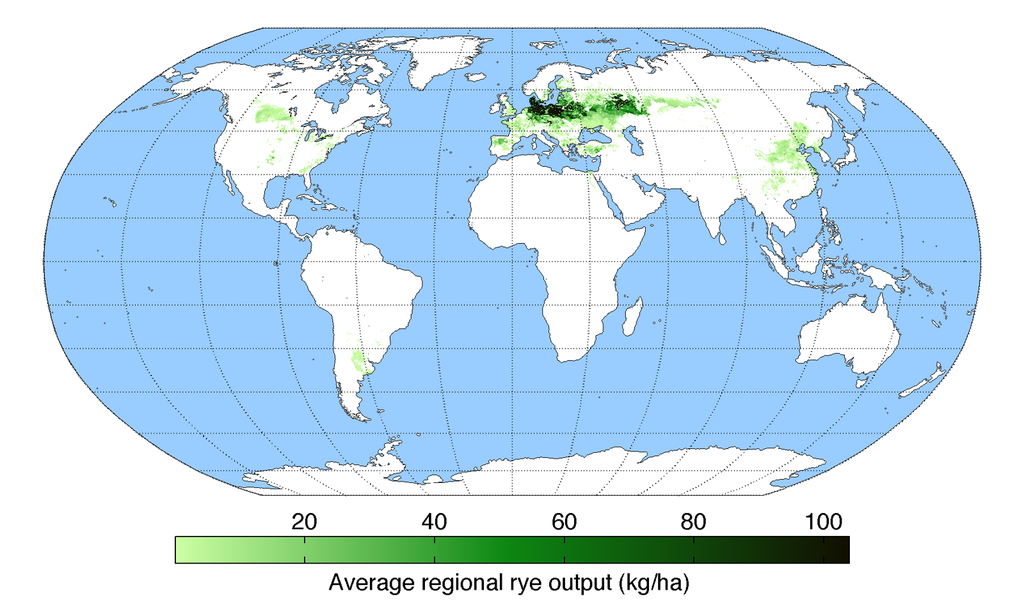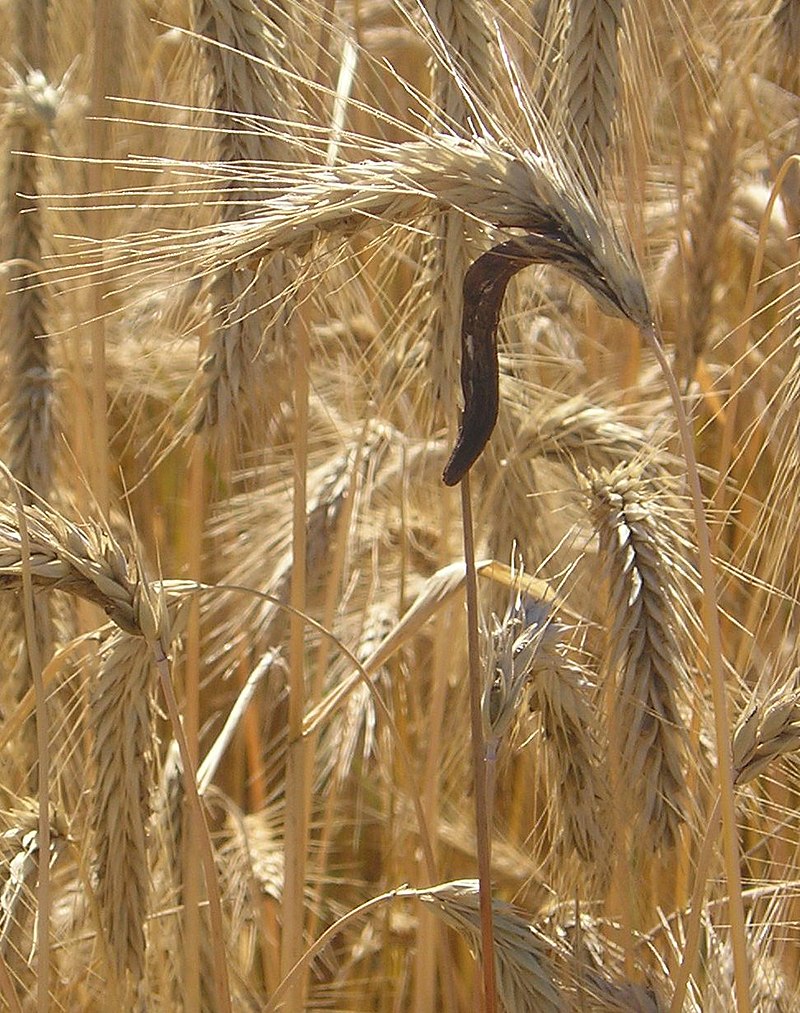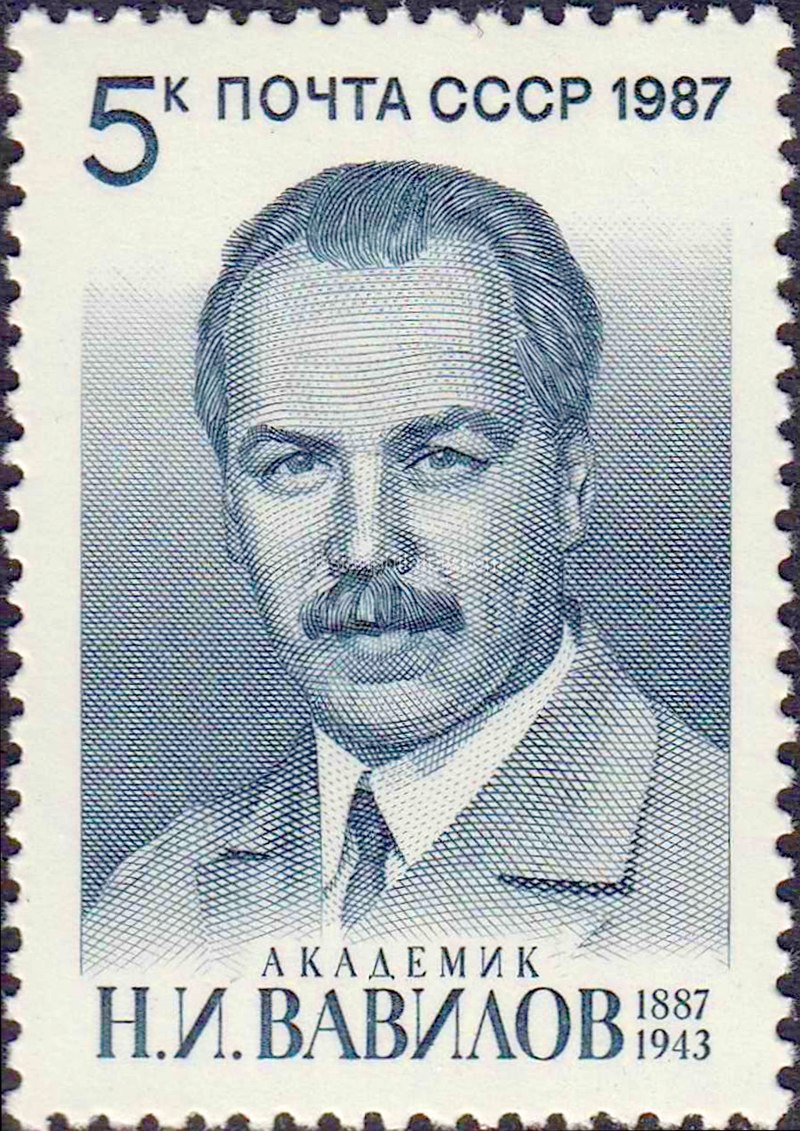At home most especially in northern climes and their corresponding latitudes in the southern hemisphere, breads made from rye are highly iconic in local and international identities, witness the Rye Route that runs through Estonia, where the National Agricultural Museum in Ülenurme, south of Tartu, held AIMA’s 2017 congress (1). Rye bread in many forms has spread around the world in the areas where it can be cultivated (2).

Fig. 1. By AndrewMT – Own work, CC BY-SA 3.0, https://commons.wikimedia.org/w/index.php?curid=9643546
Brought under cultivation later than wheat, barley or oats, rye grows well right into the Arctic areas of Scandinavia and up to an altitude of over 4,000 meters in the Himalayas, although it did not penetrate as far as today’s China and India, skirting the lands of classical civilizations. It appears to be mentioned by Pliny the Elder in the first century CE, if only as tasteless and used during food scarcities. His opinion was not shared by the Germanic tribes that cultivated it in Britain, seemingly preferring it over various wheats, as well as in the areas they occupied in modern-day France. In the latter, rye was still widely grown in the countryside long after its popularity had faded in Britain. Breads made of it – or of maslin, that is, rye and wheat combined – range in colour from light to quite dark, as in German pumpernickel and the grain was eventually carried to Canada in the early 17th century by the French pioneer L’Escarbot.

Fig. 2. Rye fields 1878 by Ivan Shishkin, Tretyakov Gallery, Moscow, public domain, https://en.wikipedia.org/wiki/File:Ivan_Shishkin_-_%D0%A0%D0%BE%D0%B6%D1%8C_-_Google_Art_Project.jpg
Rye breads are always rather dense, being lower in gluten content than wheat, and retain a characteristic stickiness due to a small amount of natural gum in the grain. They are usually leavened with a sourdough culture, although unleavened crispbreads are a specialty in Scandinavia. French tradition has remained attached to pain de seigle, especially in Brittany, the Massif Central and the southwest. One once terrifying aspect of rye was due to the disease ergot caused by the fungus Claviceps purpurea, which makes rye “spurred” and is poisonous even when eaten in small quantities, causing symptoms from hallucinations to death (3). Contrary to the gruesome scenes of medieval torment caused by ergotism as portrayed in Matthias Grünewald’s Temptation of St. Anthony (4), the fungus is medicinally important and is produced for its alkaloid, ergotamine, in treatment of migrane and to initiate birth, as well as figuring among the ingredients of the psychodelic drug LSD (5).

Fig. 3 Ergot in rye: By Dominique Jacquin – Dominique Jacquin, Public Domain, https://commons.wikimedia.org/w/index.php?curid=4436134
A recent summary of its geographic origins proposes that cultivated rye’s ancestor was probably Secale cereale subsp. vavilovii, in today’s eastern Turkey and Armenia, with the diversity of forms, both cultivated and weedy, due to introgressions with Secale montanum. Rye was cultivated in spite of unpalatability, so to speak, as it spread as a weed of wheat, hence is termed a secondary cultivated plant. Utilized occasionally to produce beers, rye is far better known as the basis for aquavits such as vodka or Korn. In addition to its value in food and drink, rye has an especially long stem and internodes, so was used to tie up sheaves of other cereals during harvesting and even today for packing straw in horticulture (5).
Nota bene, rye also figures as an honored offering to guests in welcoming ceremonies, as attendees at the AIMA 2017 Congress in Estonia experienced, and is an easy-to-carry gift to please friends, as was this loaf of rye bread from Lithuania.

Fig. 4. Courtesy of Arunas, Eglė, Ramune and Vilija, 19-03-2023
Meticulous examination of the genesis of rye as a food crop led to new insights in how we see “weeds” in the spread of agriculture, because it seems that rye was once just that – a weed of wheats. How rye came to earn its stripes as a food grain was first proposed by the Russian plant scientist Nikolai Vavilov and the process of moving from maverick to sought-after food source is now termed Vavilovian mimicry, in relation to rye and to other plants it occurs in (6).

Fig. 5. By ЦФА – http://home.nestor.minsk.by/fsunews/ussr/1987/su5773.jpg, Public Domain, https://commons.wikimedia.org/w/index.php?curid=7578915
Vavilov was perhaps best known for his pioneering work on the geographic origins of cultivated plants such as soft wheat (Triticum aestivum L.), but Vavilovian mimicry involves a performance with three actors: wheat (the model plant), rye (the mimic, a once-undesirable “weed”) and an “operator”…. human beings cultivating wheats. Growing together with wheat, rye gradually developed a similar non-shattering rachis (spindle) and its grain (caryopsis) size increased, that is, mimicking wheat’s characteristics and becoming indistinguishable from it. As wheats were carried ever farther north, the hardiness of rye favored its cultivation and it became a staple crop – as Jack Harlan noted in 1982 – “one man’s weed is another man’s crop”. The process of Vavilovian mimicry has a far more general conceptual scope today, as it is clear that the human “operator” unable to select out a weed plant has now been replaced by adaptation of the plant to continuous herbicide use… so, the herbicide is now the “operator”, a vast subject plant scientists across the world are deeply concerned with (6).
Cozette Griffin-Kremer, Associate Researcher, CRBC (Centre de recherche celtique et bretonne), Brest
Sources:
1/ Estonian Agriculture Museum: https://maaelumuuseumid.ee/en/estonian-agricultural-museum/ and the Estonian Rye Route: http://www.eestirukkiselts.ee/en/?Estonian_Rye_Route and see AIMA Newsletters N°4, N°5 and N°6 under “Rye” https://www.agriculturalmuseums.org/newsletter-subject-index/#indexPosR
2/ Wikipedia “Rye” https://en.wikipedia.org/wiki/Rye
3/ Davidson, Alan. The Oxford Companion to Food, OUP 1999, articles “Rye” and “Rye Breads” pp. 677-8
4/ Detail of The Temptation St Anthony by Grünewald: https://en.wikipedia.org/wiki/Ergotism#/media/File:Mathis_Gothart_Gr%C3%BCnewald_018.jpg
5/ Chauvet, Michel. Encyclopédie des Plantes Alimentaires, Belin 2018, pp. 301-3.
6/ McElroy, J. Scott, “Vavilovian Mimicry: Nicolai Vavlilov and His Little-Known Impact on Weed Science” in Weed Science, 2014 62:207-216, citing Jack Harlan on p. 211.
